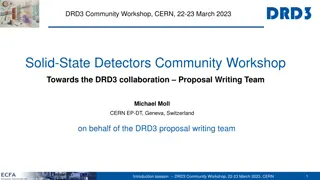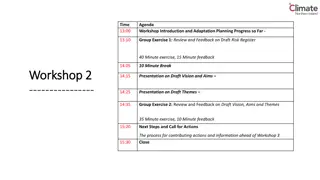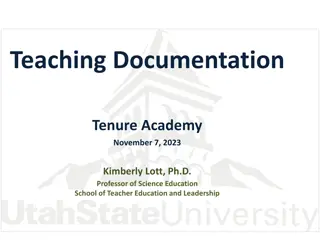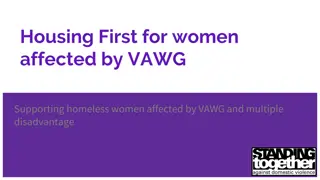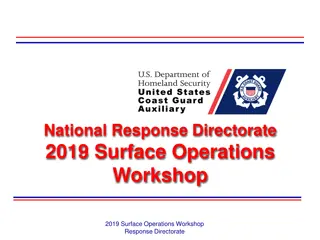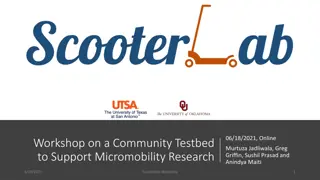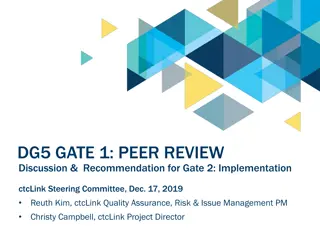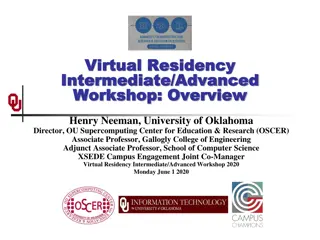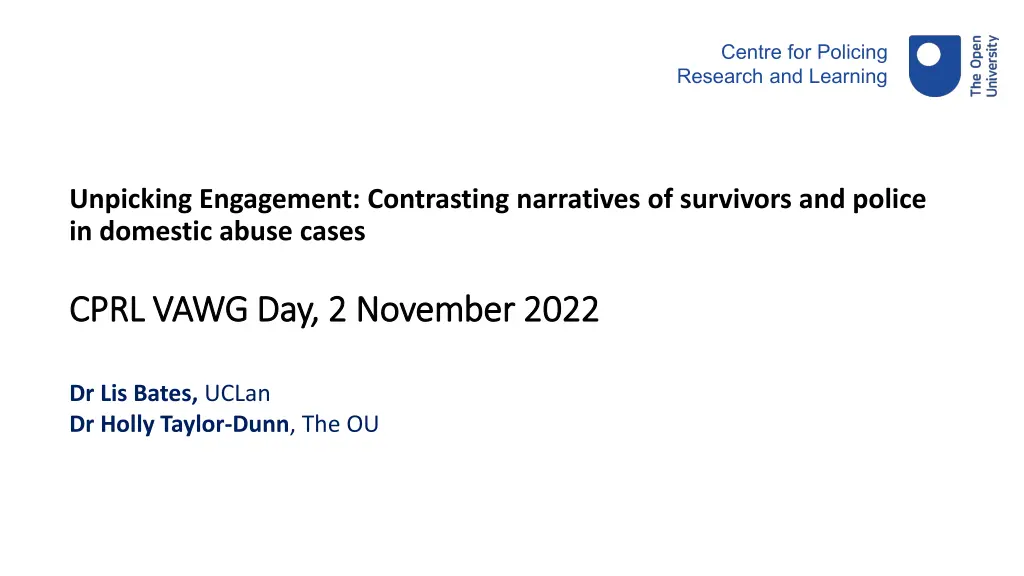
Unpicking Engagement in Domestic Abuse Cases: CPRL VAWG Day 2022
Understanding victim-survivor engagement in domestic abuse and rape cases is crucial for improving prosecution rates. The Centre for Policing Research and Learning conducts research to identify reasons for victim non-engagement with the criminal justice system, aiming to reduce attrition and enhance support measures.
Download Presentation

Please find below an Image/Link to download the presentation.
The content on the website is provided AS IS for your information and personal use only. It may not be sold, licensed, or shared on other websites without obtaining consent from the author. If you encounter any issues during the download, it is possible that the publisher has removed the file from their server.
You are allowed to download the files provided on this website for personal or commercial use, subject to the condition that they are used lawfully. All files are the property of their respective owners.
The content on the website is provided AS IS for your information and personal use only. It may not be sold, licensed, or shared on other websites without obtaining consent from the author.
E N D
Presentation Transcript
Centre for Policing Research and Learning Unpicking Engagement: Contrasting narratives of survivors and police in domestic abuse cases CPRL VAWG Day, 2 November 2022 CPRL VAWG Day, 2 November 2022 Dr Lis Bates, UCLan Dr Holly Taylor-Dunn, The OU
Centre for Policing Research and Learning Wider project Wider project Victim-survivor (dis)engagement in domestic abuse and rape cases (The VE Study) Led by Dr Lis Bates (UCLan formerly The OU) Aims To understand the profile, reasons for, and implications of victim non-engagement with police and criminal justice processes in DVA and rape cases in England and Wales and recommend measures to improve engagement and reduce attrition
Centre for Policing Research and Learning Research context Research context Victim engagement with the CJS is often cited as a key barrier in prosecuting domestic abuse offences (Sleath and Smith, 2017) According to the ONS, in the year ending March 2018, 49% of domestic abuse cases investigated by the police in England and Wales were recorded as having evidential difficulties due to victims not supporting the prosecution (ONS, 2018). Research by McPhee et al suggests 64% of cases are dropped at the point of arrest, where outcome 16 (victim does not support further action) accounted for 52.6% of all cases (McPhee et al, 2020). The increasing rate of attrition in domestic abuse cases is recognised a key challenge for police forces throughout England and Wales (HMICFRS, 2021). A consultation exercise by the team with 10 forces prior to the study identified high rates of outcome 16 (victim withdraws support) as the major challenge with policing domestic abuse and rape.
Centre for Policing Research and Learning Mixed methods Mixed methods (a) Incident data from 6 English police forces on 200k DVA reports before and after Covid-19 restrictions came in March 2020 (b) In-depth analysis of a sub-sample of 150 DVA files from two police forces (2019-20) (c) Qualitative interviews with 38 self-selecting DVA victims/survivors (since 2019) (d) Focus groups with 25 police officers across 3 forces
Centre for Policing Research and Learning Contrasting narratives Contrasting narratives Compared the key themes to arise from victim interviews and police focus groups. In many cases, victim and police narratives were aligned, particularly with regard to the fact many victims didn t understand what the police could do to help and the fact many victims weren t looking for a CJ outcome. However, some evidence of contrasting narratives, particularly in relation to victim choice, communication from police and the nature of corroborating evidence in terms of what policy says should happen, what the police say is the reality, and how victims describe their experiences.
Centre for Policing Research and Learning Contrasting narratives 1 Contrasting narratives 1 - - Choice Choice The College of Policing say Police officers have a duty to take positive action when dealing with domestic abuse incidents. Often this means making an arrest, provided the grounds exist and it is a necessary and proportionate response. Officers must be able to justify the decision not to arrest in those circumstances. Never ask the victim if they want the suspect arrested. That is your decision . (CoP, 2018)
Centre for Policing Research and Learning Contrasting narratives 1 Contrasting narratives 1- - Choice Choice Police narratives of Choice: Everything should be victim-led, not here to force anyone to do anything they don t want.Force 2 (Detective Inspector) The whole system is designed to identify what the VS wants and help give them options- Force 2 (Detective Inspector) But we have to record it and act on it there is no choice where we are going with it. They will be moved away from family, in a one bedroom flat, they are not going to choose that (Front line officer)
Centre for Policing Research and Learning Contrasting narratives 1 Contrasting narratives 1 - - Choice Choice Victims narratives of Choice The police are all about there isn t enough evidence here to get a conviction around things and so we can t go anywhere with it. But at the same time I was saying but I don t want to try and get a conviction at this point, I just need to be noting that things are not OK. That wasn t really an option. (P4, DV) I didn t feel it produced any steps towards solving the situation, because I felt like the only route of doing something through him would have been to take the crimes forward and clearly that wasn t something that I wanted to do. (P25, DVSV) This lack of choice resulted in some victims feeling they had lost control I then felt quite out of control - not out of control, I felt like I d lost control of it. Because actually if they d gone round to see him, oh my god, my life would have been misery for a bit as well (P4, DV)
Centre for Policing Research and Learning Contrasting narratives 1 Contrasting narratives 1 - - Choice Choice Summary Disconnect between the guidance set out by the CoP, the perspective of rank/specialist officers, frontline officers and victims. Currently, the police do not have much scope for giving victims choices when they report, despite the negative consequences this can have for victims (which may help explain early non-engagement). Yet rank/specialist officers see this differently suggesting the issue of positive action and offering victims choices needs to be revisited.
Centre for Policing Research and Learning Contrasting narratives 2 Contrasting narratives 2 - - Communication Communication The College of Policing say: Clear communication there must above all else be clarity as to who is responsible for keeping the victim informed, from the point of initial handover by the first responder and throughout the life of the case . (CoP, 2018) The obligation under the Victims Code is for notification within one working day, but officers and staff should seek to notify the victim as soon as possible. This is particularly important when a defendant is released from custody, so that the victim has time to prepare and initiate any protective measures. (CoP. 2018)
Centre for Policing Research and Learning Contrasting narratives 2 Contrasting narratives 2 - - Communication Communication Police narratives re Communication The OIC [Officer in Case] is responsible for this (victim contact) and it s so important to keep them updated so they know what s going on. It s massive - it might be a really big thing for them (victim), so significant. For [police] , it may be 1 of 20 DV incidents that week, but not for the victim. (Rank/specialist officer) In an ideal world, we would have time to go back and have that 2 hour conversation but there isn t time. We have to make split decisions. Then we are told we should have done this, we should have done that. (Response officer)
Centre for Policing Research and Learning Contrasting narratives 2 Contrasting narratives 2 - - Communication Communication Victims narratives re Communication If they d have followed their own policy, because they told me, they gave me a rundown of what would happen. That I d be kept up to date when he was arrested. I d know the process, I d know before he was questioned, after he was questioned. I was told I d be given all of these updates and then so obviously that made me feel safe. And then when I found out that they d breached what they d told me, it didn t make me feel safe anymore. (P20, DV) I was really upset and spoke to the officer first thing the next day to say, you know I ve just had contact with the perpetrator. I didn t even know what had happened. And it was at that point he said well, he was arrested, he s been put on bail. But it just felt like I d gone from having really high expectations to then suddenly in a situation where I m opposite the person I ve just reported to the police and I don t know what s happened and it was really kind of scary at that point. (P24, DV)
Centre for Policing Research and Learning Contrasting narratives 2 Contrasting narratives 2 - - Communication Communication Summary Disconnect between what policy says should happen in terms of communication with victims, what rank/specialist officers suggest is happening and the reality of what response officers can do. Many victims we interviewed described not being regularly informed by their OIC including of key developments such as the release of a perpetrator from police custody. This lack of communication has a direct impact of victim safety and is therefore vital in terms of victim engagement.
Centre for Policing Research and Learning Contrasting narratives 3 Contrasting narratives 3 - - Evidence Evidence The College of Policing say: Officers should investigate domestic abuse proactively from the outset with a view to building an evidence-led case that does not rely on the support of the victim. In all domestic abuse cases, investigating officers (IOs) should explore the history of domestic abuse Officers should obtain as much detailed information as possible to understand the context and identify signs of coercive, controlling or threatening behaviour. Officers should use such information to support the prosecution file and, where relevant, to show that the offence is part of a pattern of domestic abuse.
Centre for Policing Research and Learning Contrasting narratives 3 Contrasting narratives 3 - - Evidence Evidence Police narratives re Evidence Victims don t want to deal with the historic issues they may have reported (ie those that crop up in the DASH Risk Assessment) and want to focus on what s just happened. (Force 1) But if its clear there is a black eye and we heard on phone get off me, get off me then even if she s saying she is fine, we will arrest him. (Force 2).
Centre for Policing Research and Learning Contrasting narratives 3 Contrasting narratives 3 - - Evidence Evidence Victims narratives re Evidence They had no right to dismiss my evidence. They even refused to take some witness statements. There were cameras on the house, front door and back door so he could monitor everything I do. They refused to record them. (P12, DVSV) My nan went and bought a camera, I m sitting there screenshotting everything, recording it, got it all in separate files on my phone as evidence and then they say it s not enough evidence and there s no point and, oh, it drives me insane. (P48, DVSV) The only incident they were concerned about was the one that I, the assault that I rung up about. They didn t want to know about, they wanted me to gather evidence, but then when I told them about the control and all the things that had happened, obviously it had been a full two years of control and physical abuse before the time when I decided to get him done for it. The only thing they said that they could get him done on was the assault that they had witnessed. (P30, DV) At the time I was a bit upset because I was like well, I had bruises, and they d taken photos of the bruises, but apparently that wasn t enough because there was no witnesses, and I was like, at the time I didn t really think about the neighbour part, but I was a bit like well there s not going to be any witnesses, I m in my home with him on my own. (P39, DV)
Centre for Policing Research and Learning Contrasting narratives 3 Contrasting narratives 3 - - Evidence Evidence Summary According to victims we interviewed, the vast majority were told that evidential difficulties were the reason their case could not proceed (most did not withdraw). Many victims reported being told that there was not enough evidence, particularly in the context of coercive control. However, police focus groups did not suggest lack of corroborating evidence was a particular issue. Case-file analysis suggested some cases were closed as victim withdraws support but were actually due to a lack of corroborating evidence. Raises questions regarding what constitutes evidence in DA cases and what factors may influence the evidential avenues explored. Importantly, how victims understand and police communicate - what constitutes evidence.
Centre for Policing Research and Learning Reflections and recommendations Reflections and recommendations Choice is positive action still a suitable policy given the impact on victims of not being given a choice? In reality how does this work in policing when there is evidence the policy is applied in a mixed way by officers? Communication how can the issues of poor communication be resolved, especially where demand is sky-high? Safeguarding teams are a possible solution. Police focus groups showed in one force where they had these this seemed to improve their ability to maintain frequent contact. Evidence sharp contrast between victims who describe providing the police with evidence that they felt was subsequently ignored, and police who suggested if there was evidence the case would progress. Do we need to re-visit what constitutes evidence particularly in the context of coercive control? Are officers focused too heavily on victims as the only source of evidence?
Centre for Policing Research and Learning Conclusions Conclusions According to police data, victim withdrawal in DA cases is a significant issue but what constitutes withdrawal ? In terms of choice, communication and evidence, there is a disconnect between what policy suggests should be happening, what police officers say is the reality and what victims experience. Addressing these contrasting narratives may help to reduce victim withdrawal. This will require changes to policy (e.g. on positive action) but will also require more resources for frontline officers tackling DA.
Centre for Policing Research and Learning Thank you for listening Thank you for listening Questions? Dr Lis Bates LBates5@uclan.ac.uk Dr Holly-Taylor-Dunn Holly.Taylor-Dunn@open.ac.uk
Centre for Policing Research and Learning WORKSHOP: VAWG RESEARCH PLAN
Centre for Policing Research and Learning WORKSHOP DISCUSSION WORKSHOP DISCUSSION Individually, take 10 minutes to consider what you think are the key knowledge gaps in each of the 6 areas what you know you don t know but wish you did know! Using one post-it per gap , please write these down. Themes: 1) Victims/survivors 2) Perpetrators 3) Children 4) Police and other professionals 5) The criminal justice process 6) Alternatives to criminal justice Please now share your gaps with your table and discuss. As a table, please identify together what you think are the top 5 gaps that research could look at. One person from your table, bring your top 5 post-its and place them under the relevant category/ies. Please take time to look around the post-its and use your three dots to now vote on which of all of them you think are the most important to form the basis of a research project. You can use all of your dots on one gap or split them across multiple gaps .




